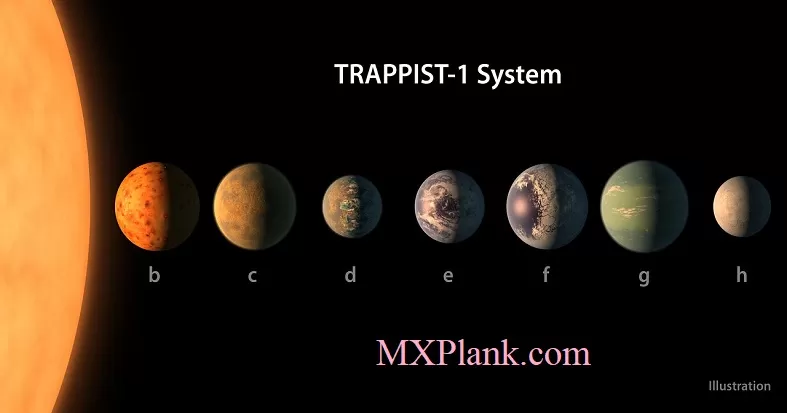R Sculptoris and its hidden companion

This new NASA/ESA Hubble Space Telescope image shows a star known as R Sculptoris, a red giant located 1500 light-years from Earth in the constellation of Sculptor. Recent observations have shown that the material surrounding R Sculptoris actually forms a spiral structure — a phenomenon probably caused by a hidden companion star orbiting the star. Systems with multiple stars often lead to unusual or unexpected morphologies, as seen, for example, in the wide range of striking planetary nebulae that Hubble has imaged.

R Sculptoris is an example of an asymptotic giant branch (AGB) star. All stars with initial masses up to about eight times that of the Sun will eventually become red giants in the later stages of their lives. They start to cool down and lose a large amount of their mass in a steady, dense wind that streams outwards from the star. With this constant loss of material, red giants like R Sculptoris provide a good portion of the raw materials — dust and gas — used for the formation of new generations of stars and planets. They also show what is likely to happen to the Sun in a few billion years from now, and help astronomers to understand how the elements we are made up of are distributed throughout the Universe.
R Sculptoris itself is located outside the plane of the Milky Way and is easily visible using a moderately sized amateur telescope. In this part of the sky far from the galactic plane, there are relatively few stars but many faint and distant galaxies can be seen.
The black region at the centre of the image has been artificially masked.
R Sculptoris also known HD 8879 and IRAS 01246-3248, is located in the constellation of Sculptor, about 1,500 light-years away from Earth.
"R Sculptoris is something known as a carbon-rich asymptotic giant branch (AGB) star, meaning that it is nearing the end of its life," explained ESO astronomer Markus Wittkowski and colleagues.
"At this stage, low- and intermediate-mass stars cool off, create extended atmospheres, and lose a lot of their mass - they are on their way to becoming spectacular planetary nebulae."
"While the basics of this mass-loss process are understood, astronomers are still investigating how it begins near the surface of the star."
"The amount of mass lost by a star actually has huge implications for its stellar evolution, altering its future, and leading to different types of planetary nebulae," they said.
"As AGB stars end their lives as planetary nebulae, they produce a vast range of elements - including 50% of elements heavier than iron - which are then released into the Universe and used to make new stars, planets, moons, and eventually the building blocks of life."
The astronomers analyzed several days of interferometric observations captured by two instruments on ESO's Very Large Telescope Interferometer (VLTI) between October 2012 and December 2015.
The VLTI observations revealed a complex structure and a dominant bright spot within R Sculptoris' stellar disk.
"The detected complex structure is most likely caused by giant convection cells, resulting in large-scale shock fronts, and their effects on clumpy molecule and dust formation seen against the photosphere at distances of 2-3 stellar radii," Dr. Wittkowski and co-authors said.
"The bright spot is, in fact, a region around the star with little to no dust, allowing us to look deeper into the stellar surface."

This ghostly image features a distant and pulsating red giant star known as R Sculptoris. Situated 1,200 light-years away in the constellation of Sculptor, R Sculptoris is something known as a carbon-rich asymptotic giant branch (AGB) star, meaning that it is nearing the end of its life. At this stage, low- and intermediate-mass stars cool off, create extended atmospheres, and lose a lot of their mass - they are on their way to becoming spectacular planetary nebulae.
While the basics of this mass-loss process are understood, astronomers are still investigating how it begins near the surface of the star. The amount of mass lost by a star actually has huge implications for its stellar evolution, altering its future, and leading to different types of planetary nebulae. As AGB stars end their lives as planetary nebulae, they produce a vast range of elements - including 50% of elements heavier than iron - which are then released into the Universe and used to make new stars, planets, moons, and eventually the building blocks of life.
One particularly intriguing feature of R Sculptoris is its dominant bright spot, which looks to be two or three times brighter than the other regions. The astronomers that captured this wonderful image, using ESO's Very Large Telescope Interferometer (VLTI), have concluded that R Sculptoris is surrounded by giant "clumps" of stellar dust that are peeling away from the shedding star. This bright spot is, in fact, a region around the star with little to no dust, allowing us to look deeper into the stellar surface.
This image captures an extremely small section of the sky: approximately 20x20 milliarcseconds. For comparison, Jupiter has an angular size of approximately 40 arcseconds.
NASA/ESA and The Hubble Heritage Team (STScI/AURA)






